Cycling is on the up: with its minimal environmental impact and health benefits, more and more people are taking to two (or three) wheels.
So now seems like a good time to survey our photography collection to see how it can illustrate the history of cycling—as a pastime, as part of a job, for exercise or simply as a way of getting about.
The archives demonstrate the enduring appeal of heading out for a bike ride with friends. Box Hill in Surrey has been popular with cyclists for over 100 years and the 2012 Olympics cycling road race events included circuits of Box Hill. The average gradient of the hill is 5%, so it’s not so surprising that some people choose to get off and push.
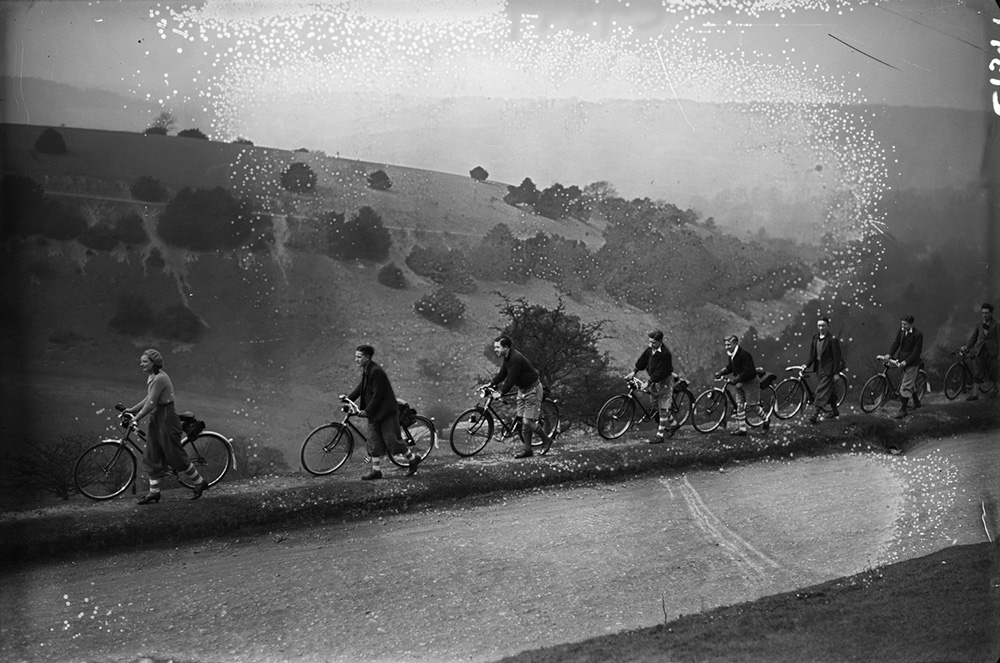
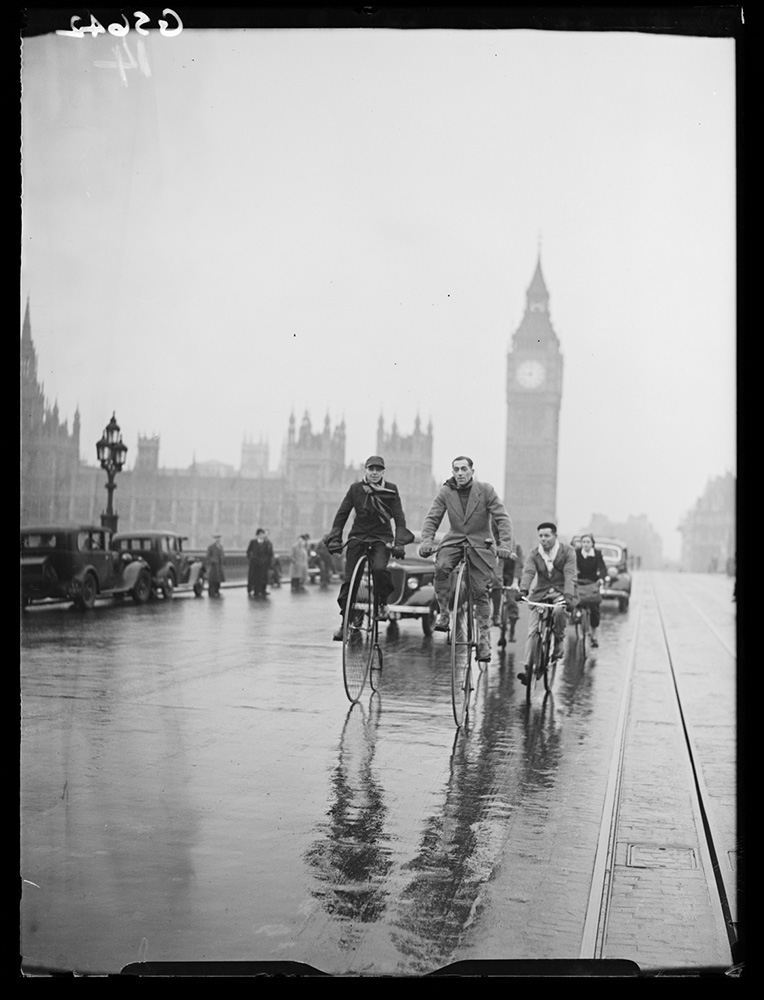
A craze for cycling swept the UK during the 1890s and clubs were formed throughout Britain. Many women took up the hobby and it became a way in which men and women came together unchaperoned—which scandalised more conservative elements of society.
Despite this, cycling continued to be popular with women, particularly with the move away from the penny farthing design (like the ones in front above) to a more practical style which allowed women in long skirts to ride. The bicycle has been referred to as ‘the freedom machine’ as it allowed women a new sense of freedom of movement, made even easier when more practical clothing became acceptable.


The photographs also demonstrate the history of two-seater and even three-seater cycles, with tandems and ‘triplet’ bikes.
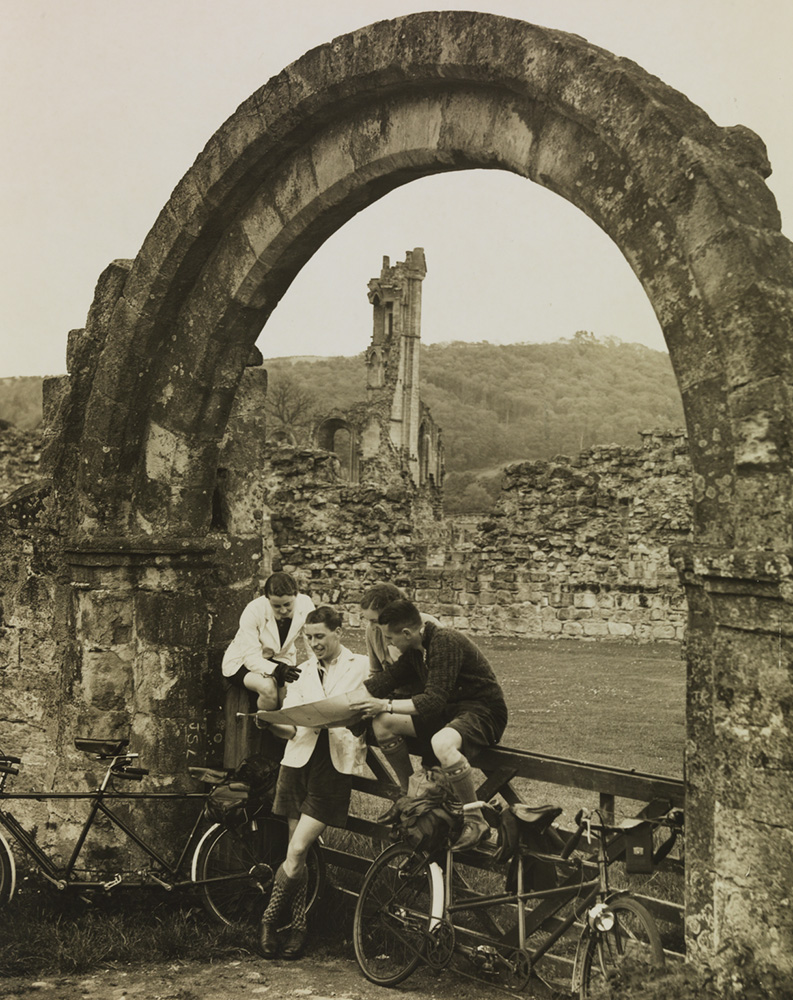
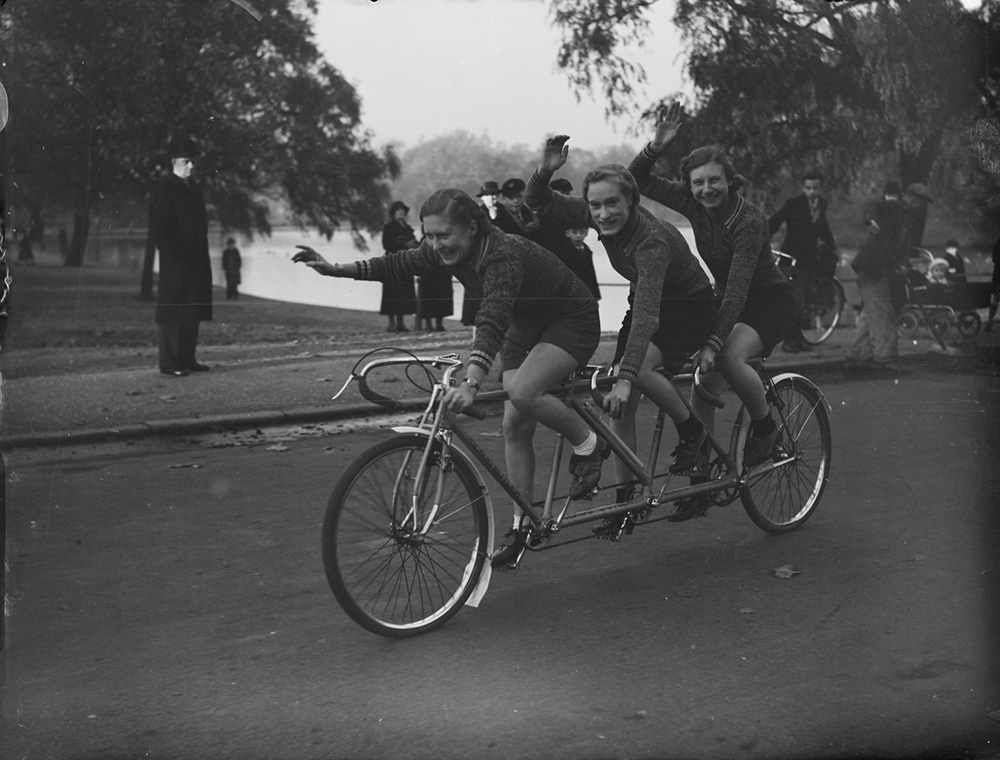
Childhood presents many of us with our first experiences of cycling. But the stark contrast between the two photographs below, taken only 10 or so years apart, is obvious.
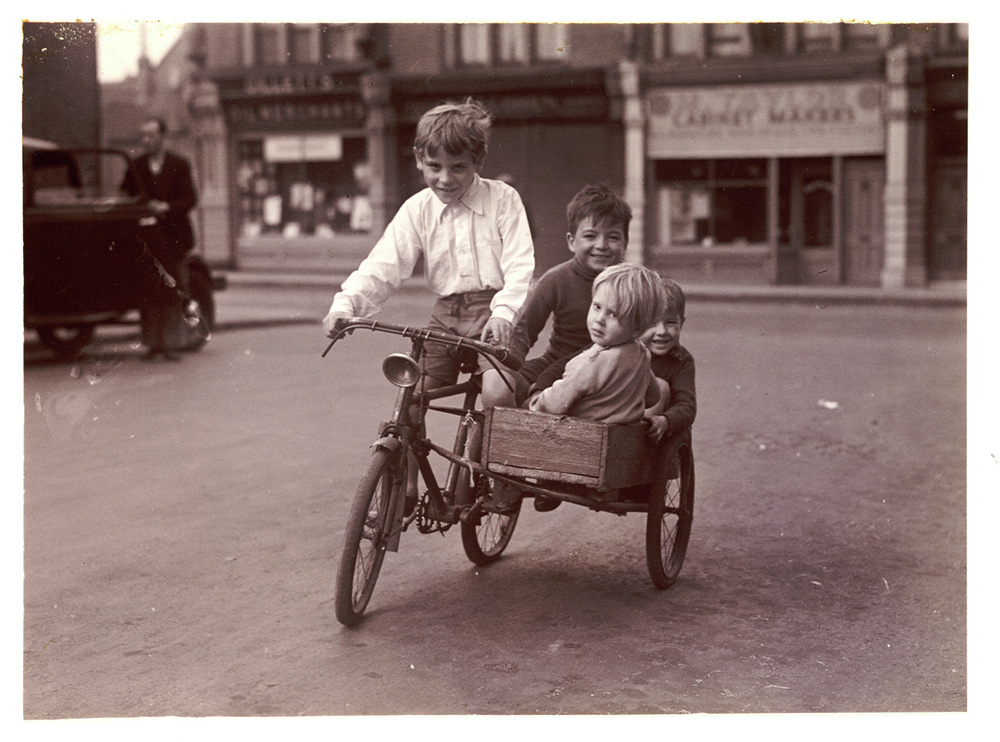
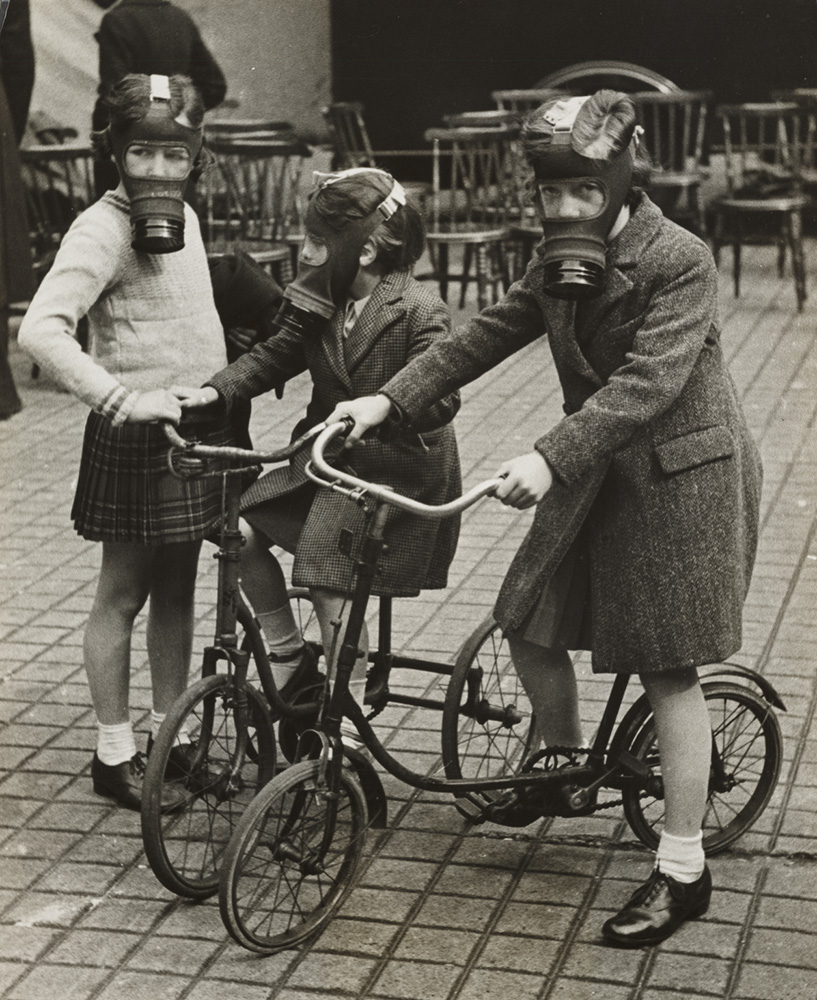
Such photographs serve to remind us of the importance of ‘normality’ in challenging times. Despite the threat of the Second World War, these children were still able to enjoy time on their bikes, albeit with the added precaution of gas masks.
The increasing popularity of cycling clubs led to rallies and meetings for the members, which presented an opportunity for manufacturers to advertise their products (as Raleigh are doing in the image below), but also for fun times.
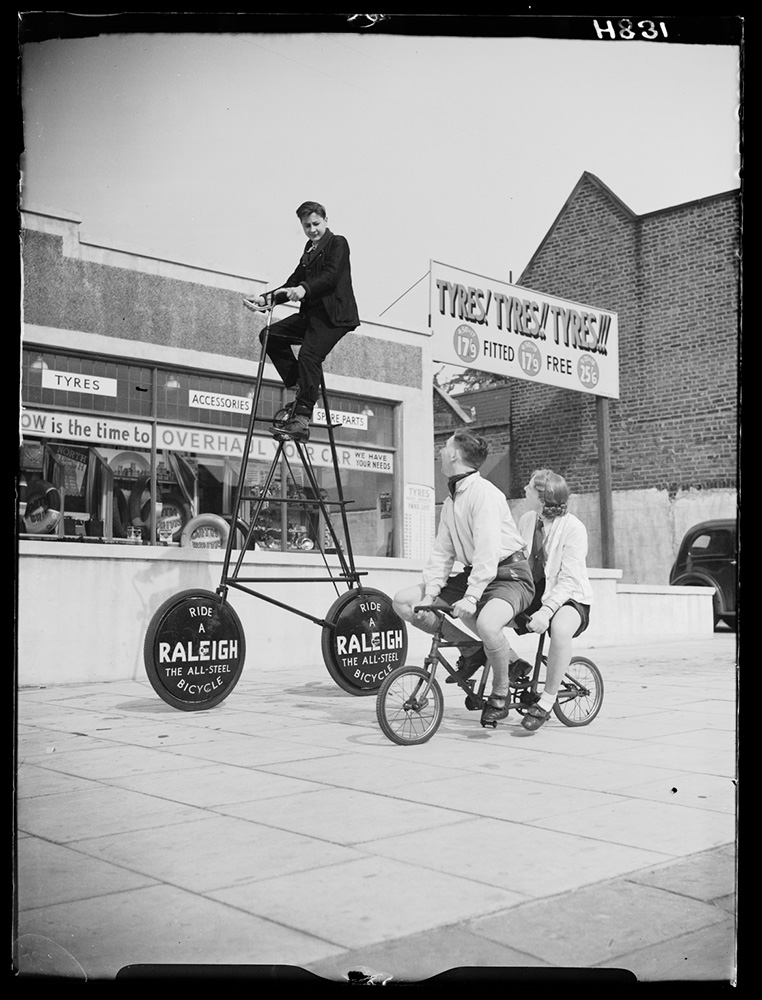
In the below image, the competitor in the tradesmen’s bicycle race had to carry half-bushel baskets as they cycled around the track.

And bicycles are of course a practical item for many professionals, either for delivery people, police officers or—as below, and with the addition of a sidecar—an ice cream seller.
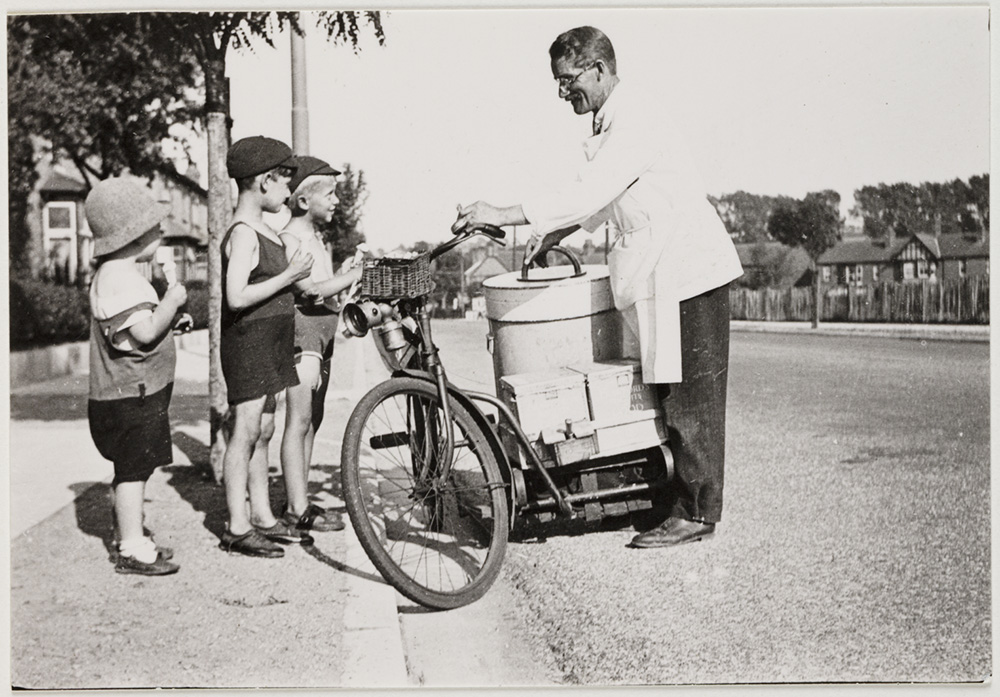
Young Nigel presented a puzzle to the authorities in 1955 when he made a radio to fit onto his bike. If it was considered a portable set, and there was already a radio licence in his home, then no licence would be needed, but if it was part of the bike, as with a car radio, then he would need one. Unfortunately, the caption information on the back of the print does not provide us with a record of the outcome.
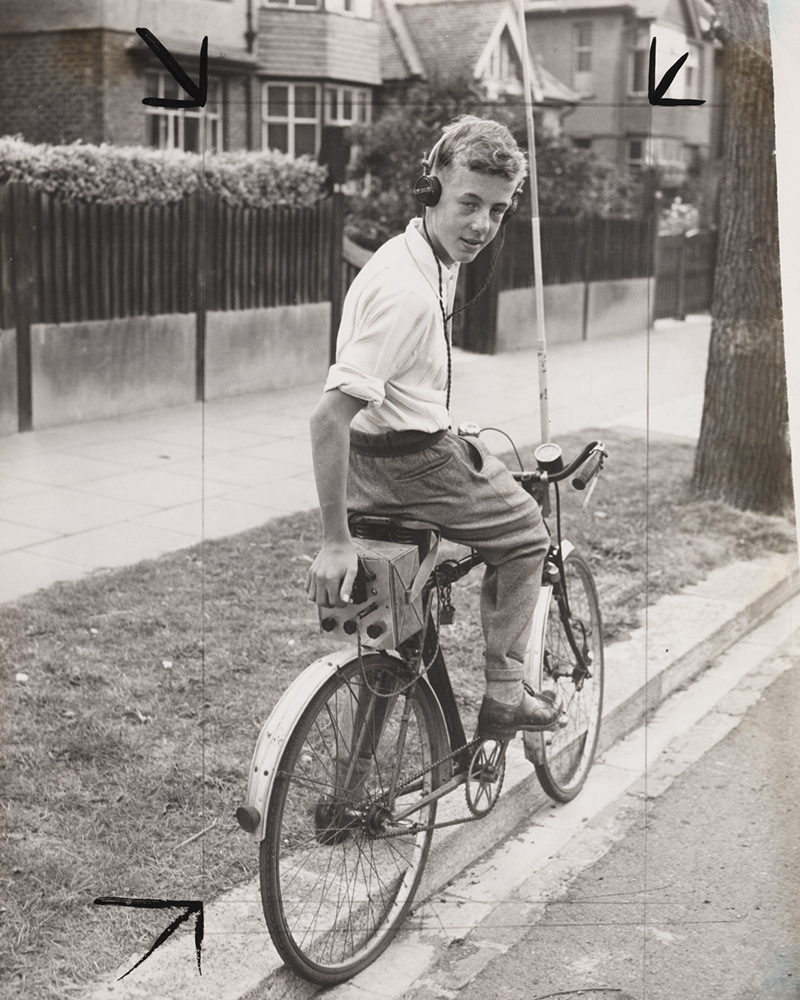
As well as radios on bikes, the industry was clearly keen to look ahead to what its future customers might desire from their bicycles. The photograph below, from 1933, shows the ‘wireless cycle’ which came complete with a telephone—a prediction of not only what the cyclist of the future would require from her bike, but also what she may be wearing when 1940 came around.
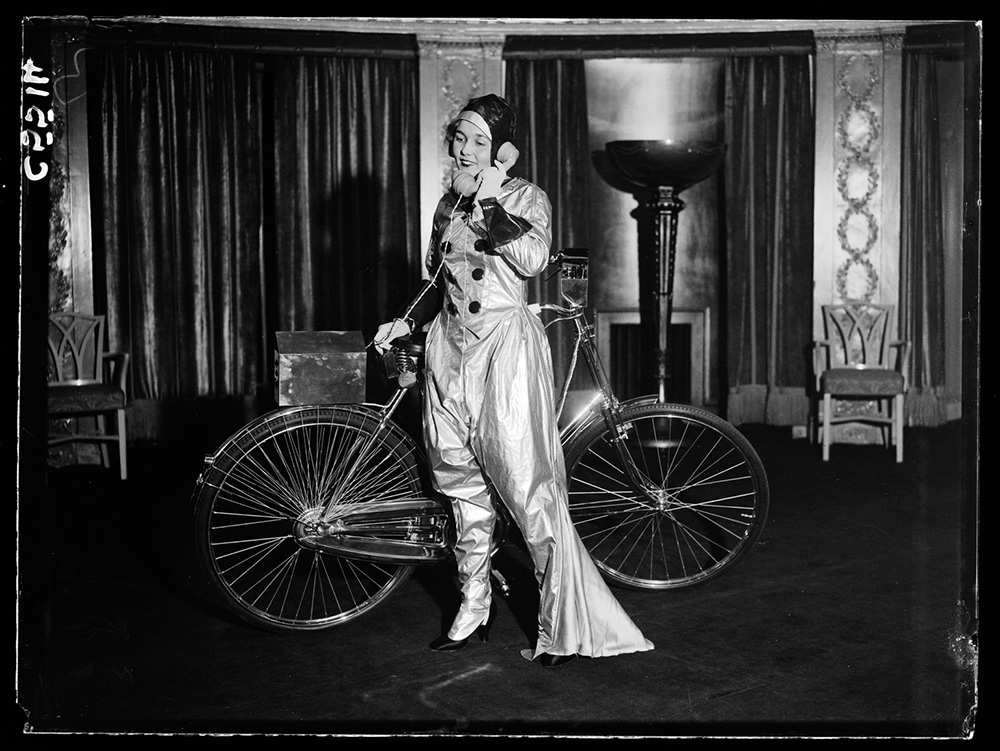
The business of cycle manufacturing and marketing feature in the archives, creating newsworthy stories to promote new products and raise company profiles. Hercules was a Birmingham-based company founded in 1910; by February 1939, it had produced 6 million cycles. It’s likely that the man with the baskets in the earlier image is riding a Hercules trade bike.
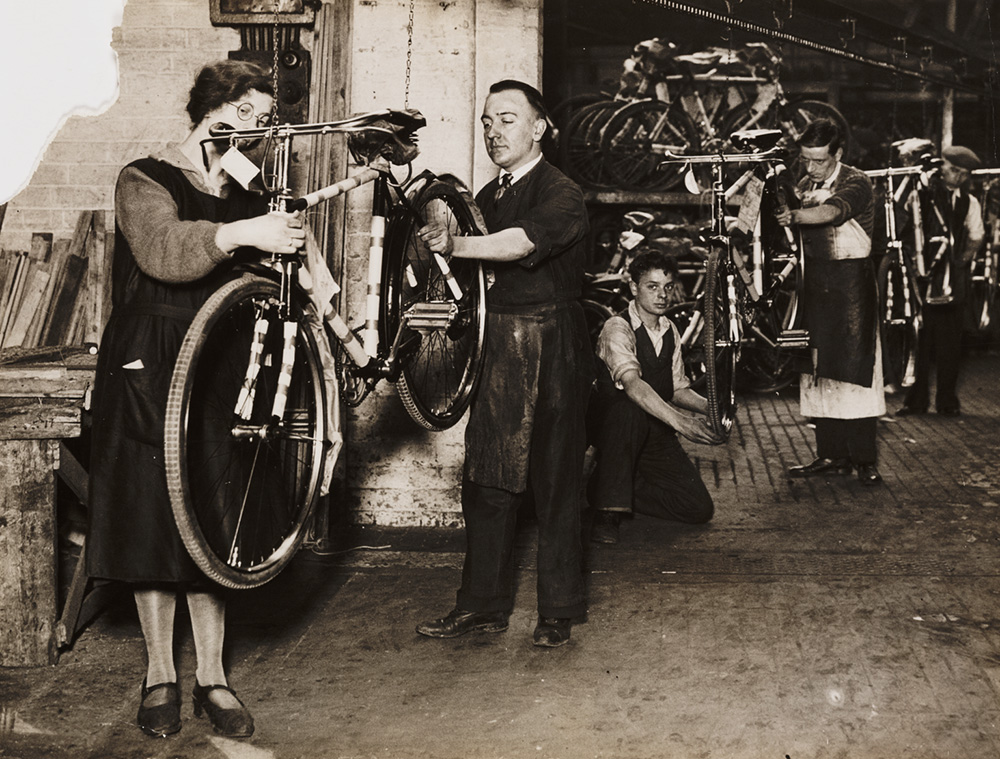
Images in the collection also demonstrate that new designs, lightweight models and power assisted bikes all appeared earlier than you might imagine.
A recumbent cycle, below, was advertised at a cycling and camping show at the Royal Horticultural Hall in London in 1933. It was offered for sale by the company set up by Olympic cyclist Freddie Grubb, who won two silver medals in the 1912 Games. In 1914 he established F H Grubb cycle manufacturers following his retirement from racing.

The origins of motorised bicycles go back to the age of steam powered engines in the 19th century. Below is a more modern example from the 1930s; an 80cc motor has been attached to assist the usual pedal propulsion.

In 1934, the bicycle pictured below was said to be the lightest ever made, it weighed under 13lb (6kg) and could be picked up using just one finger, as demonstrated by this cyclist.
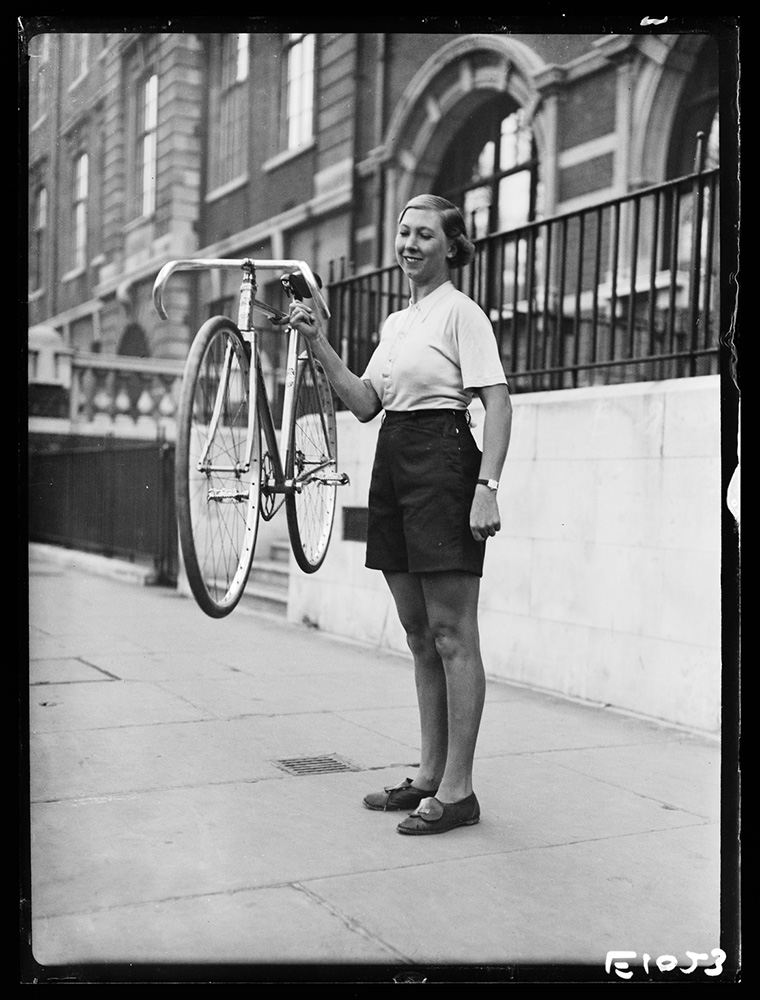
Our collection also includes images of professional cyclists, such as Reg Harris, who won two silver medals at the 1948 Olympics. In 1974 he staged a late comeback, winning a British Cycling title at the age of 54.
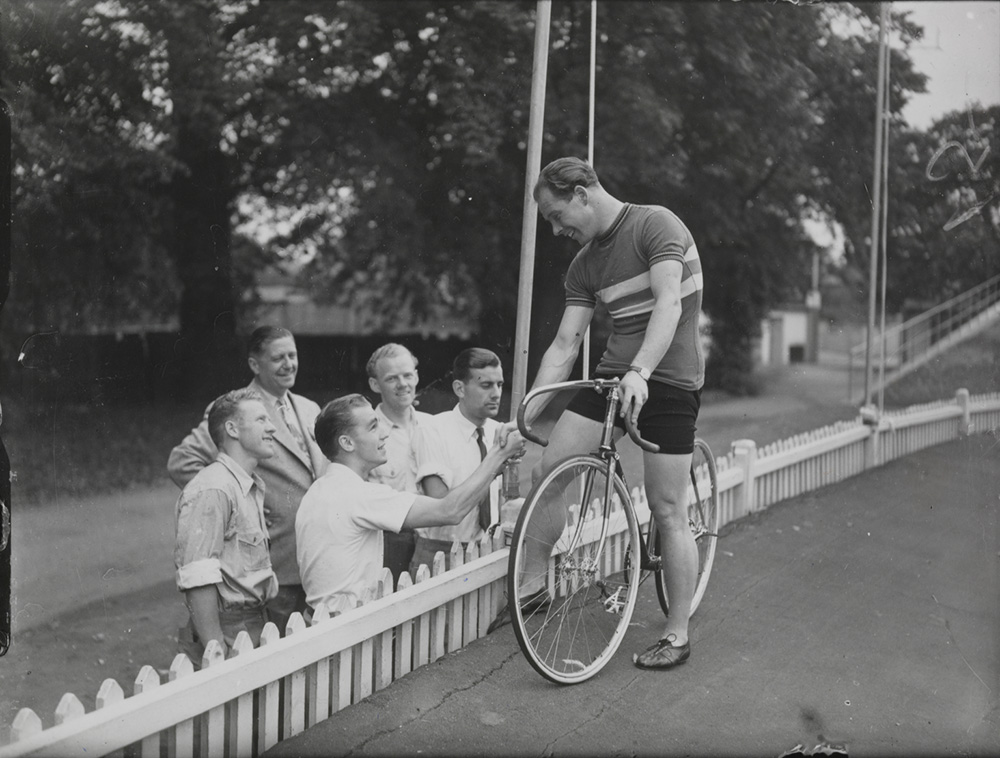
Reg clearly used his success to promote cycling and cycling products. Below he is riding a brand-new bike from Triumph, ‘The Pink Witch’. This included elements which the marketing people no doubt thought were perfect to appeal to young women: a makeup mirror (which you can see attached to the handle bars) and a lipstick holder. It came in shocking pink or peacock blue and was aimed at the ‘smart girl’ of the late 1950s.

And finally, because no blog post is truly complete without an animal photo, here’s the dog on a cycle pic. Wendy, here on her own custom made tricycle, was featured in the British melodrama They Were Sisters, made in 1945.
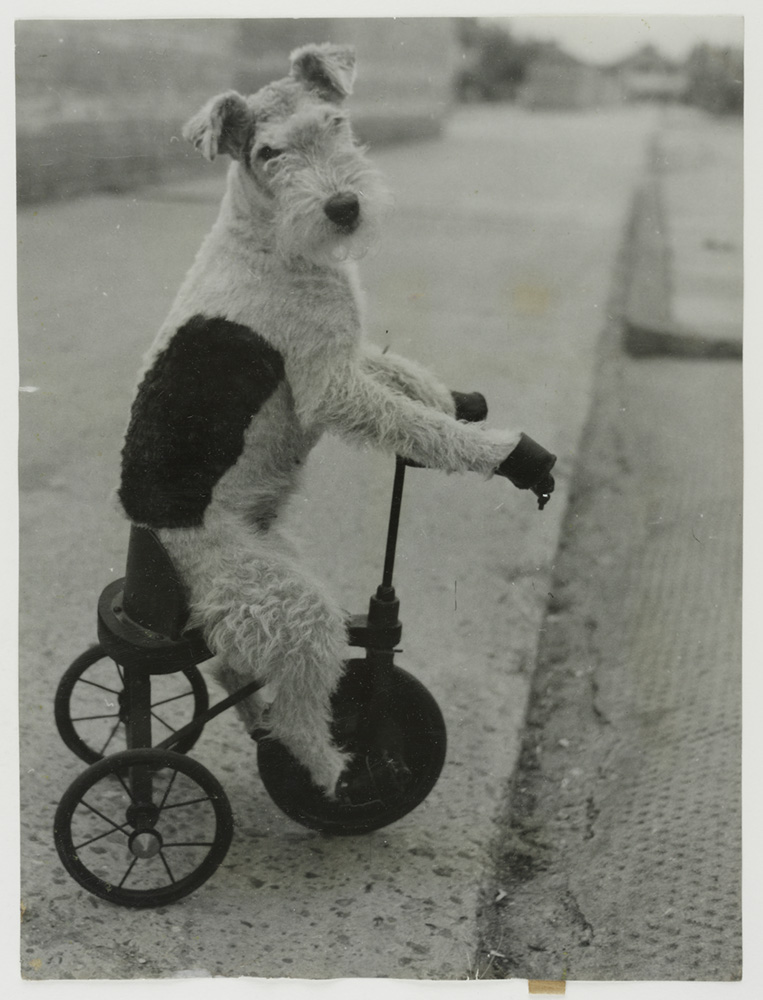
There’s a strong connection between the history of cycling and that of photography, and you can find out more about it in our previous blog post on the surprising link between cycling and photography.
What a lovely collection of pix and memories. Thanks Tony. The reference to Reg Harris of interest to me. My father-in-law – also a Reg Harris and keen cyclist – gave me his old Hobbs Blue Riband racer when age overtook him. Still got it, I was born in ’48 when Reg did well at the Olympics. I now do well poodling about on a bike at all opportunities. A Marin Al bike with 14-speed hub gear making it easy. In the 60s I had a MIcrocord TLR (Rollei copy made in England) and a Leica 1c with Hektor Lens, The both form a nostalgic museum in a cupboard and I see then from where I now sit. I now flounder and fuss with a Nikon DSLR, fighting unexpected inter-actions from it’s blinding array of automatic “features”. C’est la vie, Sail away.!